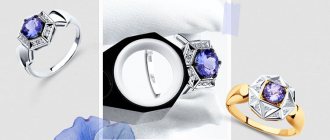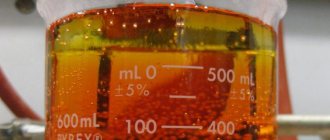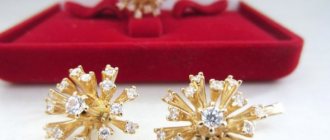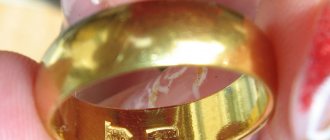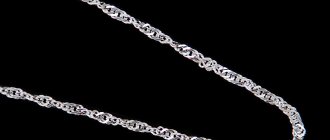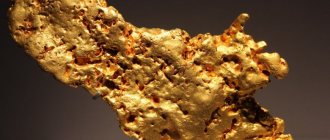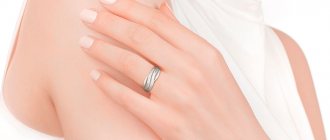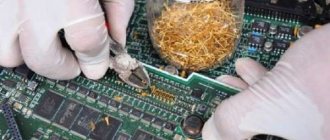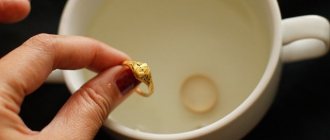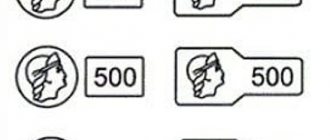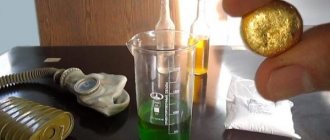Equipment
To start refining both gold and silver in your home workshop, you will need to purchase quite a few tools and consumables.
Here is a list of the essentials:
- beakers per liter and 250 ml;
- laboratory funnel for transferring liquids;
- glass stick (at least 30 cm long);
- crucibles for melting;
- electric stove;
- thick rubber gloves;
- respirator with carbon filter;
- protective glasses;
- porcelain bowls for chemicals.
When does it become necessary to check gold for authenticity?
There are many situations when you have to determine at home whether you see real gold or counterfeit metal before your eyes. Fake gold often looks like natural metal and is an alloy of several elements. For these purposes, brass, aluminum, and iron are used. Alloys used: vermeil, pinchback, butt bronze. Sometimes, it's just well-polished copper. Another option when we can say that a precious metal is not genuine is the use of gold of a lower standard than the declared one.
Along with professional testing methods using special chemical reagents and touchstones, as well as modern analyzer instruments, there are many popular options.
Craftsmen are coming up with more and more new methods of testing noble material for authenticity. There are known identification options using vinegar, a magnet, or a lapis pencil. One of the most reliable, reliable ways: test gold with iodine at home. Explanation for this: iodine is a rare chemical element that can react with such an inert element as gold.
Gold refining using iron sulfate
Refining gold, and to no less extent silver, in a similar way requires the preliminary production of chlorides of these metals. This process is quite complicated and requires a distillation cube.
The process looks like this:
- raw materials are ground into powder;
- placed in a sealed chamber;
- chlorine gas is driven through it;
- the solution is condensed.
If a composition containing silver was used as the starting material, then the liquid will have to be heated - in this case, the mentioned metal associated with chlorine collects on the surface, and the gold itself and other impurities end up at the bottom.
Many people then complete the refining process by electrolysis. Gold chloride is dissolved in hydrochloric acid and poured into the bath. Two metal objects connected to electricity are also placed there. As a result, the precious metal is deposited on what is connected to the battery positive.
If there is no equipment for electrolysis, then iron sulfate should be used. The powder must be dissolved in water in a ratio of 1 to 2. For one gram of raw material, 12 ml of the composition will be required. If the reagent becomes cloudy, immerse ordinary nails in it (no more than 5 g per 100 ml).
Before starting the cleaning, the previously obtained gold chloride is mixed with aqua regia and ordinary table salt (take the “Extra” type). The mixture is heated (stirring) in a porcelain container, placing an asbestos gasket between it and the flame. Our task is to eliminate excess nitric acid. The process is considered complete when the substance thickens to the state of sugar syrup. A solution of iron sulfate is poured into the prepared preparation. After shaking, a brown precipitate forms. His:
- filter;
- washed;
- dried;
- burn together with the paper filter;
- all that remains will be gold.
Other verification tools
Among other means of checking the authenticity of precious metals, there are also several simple options.
Magnet
Checking with a magnet. The property of gold being diamagnetic is used. This is a substance that does not react to a magnetic field. Moreover, pure metal will repel the magnet. Other metals, with the exception of precious metals, have to one degree or another the properties of ferromagnets that experience mutual attraction with a magnet.
Therefore, gold of low purity with additives of other metals can react to a magnet. If the product “sticks” to it, this is a sign of the use of a ferromagnetic alloy with iron, nickel, and other metals.
In this way, you can identify counterfeit jewelry or detect a lower standard at home.
There is the possibility of counterfeits made from materials such as copper and aluminum since they are not magnetic. However, in the presence of a strong magnet, a field arises between it and the copper, which is triggered in such a way that when approaching the metal and almost touching it, the magnet stops abruptly.
Gold in its pure form is not attracted to a magnet
Lapis pencil
A drug based on silver and potassium nitrates is useful for testing gold. To do this, the decoration is lowered under water or part of it is wetted, and a strip is applied to the wet area with a pencil. Then wipe with a dry cloth or cotton pad. The trace left from the lapis indicates that the product is counterfeit.
There will be no stripes left on the gold.
The most common type of lapis pencil
Refining gold directly with iodine
This method allows you to refining gold from the found stone. The process itself is quite labor-intensive and does not guarantee success, since the presence of precious metal in a piece of rock is very difficult to determine by eye.
The procedure is as follows:
- the ore is crushed to a homogeneous powder;
- it is washed in a tray until black grains (concentrate) remain;
- the residue is dried and placed in a test tube;
- 10 percent alcohol iodine is also poured in (for 2 grams - 6 ml);
- the mixture is heated for 10 minutes, without allowing it to boil;
- leave until sediment settles;
- the clear solution is collected into a pipette;
- squeeze out drop by drop (as the previous one dries) onto the heated glass.
As a result, if there really was gold in the stone, then a so-called mirror will remain on the plate. It must be washed in nitric acid to remove unnecessary metals. All that remains as a result will be the desired precious metal.
The procedure for verifying the authenticity of gold with iodine. Step-by-step instruction. Video and photo
Description of the method of how to test gold at home for authenticity using iodine. Testing is easy and safe. The whole procedure takes place in several stages.
Prepare medical iodine and cotton swabs.
Selecting gold jewelry to check
Apply a drop of iodine to the decoration with a cotton swab
Wait a while until it dries
Wipe the stain with a cloth
Treat the product 585 or 583 samples with medical alcohol
At the first stage of preparation, the product is treated with medical alcohol. After processing, allow to dry.
It is recommended to first clean the jewelry with alcohol.
Sand the metal on the inside
The second preparatory stage is carried out using sandpaper. A decoration or simply an object made of gold is sanded on the side that is not the “front”. This is how the ring is processed from the inside. It is necessary to remove the top layer of metal, since it may be covered with a film of external substances. It is necessary to open the gold layer.
In addition to sandpaper, you can use any abrasive material, just not very coarse, so as not to remove too thick a layer of metal and damage the product.
Apply iodine to the jewelry in a wiped area
At the next stage, iodine is applied with a cotton swab. You can use a pipette; with it you can drop a drop exactly onto the area that has been cleaned. It is worth trying to minimize the area on which iodine falls. There will be a reaction on it, a color change will occur.
The reaction does not depend on the size of the spot, so you should not strive to get more reagent onto the surface.
Apply iodine to the cleaned surface of the jewelry
We get the result
Further stages are characterized by observation of the process. A chemical reaction occurs with a substance from the group of halogens, which includes iodine. You can test gold with iodine by its color change. Variations in brown or dark green shades indicate not only that gold is involved in the reaction, iodine indicates a sample.
Greenish tones characterize lower grade metal with a higher copper content.
How gold is refined from old radio components
Extracting gold from radio components that have become unusable is quite possible at home. The precious metal is contained in:
- transistors;
- microchips;
- even SIM cards.
Let's say right away that quite a lot of raw materials are required to obtain a noticeable result. The thing is that the content of valuable metal in radio components rarely exceeds 1 percent.
Refining gold and, equally, silver is cheapest to carry out using chemical reagents. In the first case, prepare aqua regia, and in the second, only nitric acid will be enough.
To complete the procedure faster, the container with reagents and crowbar is heated to 76 degrees. It is better to use an electric stove, as it allows you to control the temperature as accurately as possible. At home, it is permissible to limit yourself to an enamel pan that has no cracks or scratches. If you don't have one, take an aluminum container.
Before you begin refining, remove the gold-plated elements from the radio components and throw away everything else. It is not difficult to determine exactly where the precious metal is located - these are, as a rule, contacts and other parts that have a characteristic yellow color.
The prepared scrap is placed in a container with already heated acid and kept on the stove for at least 4 hours (or until the liquid has completely evaporated). Remember to stir regularly with a glass rod. Upon completion of the procedure, remove undissolved iron elements using a magnet. The finished powder is dried and melted.
Preparing Jewelry for Cleaning
There are a great many variations of cleansing, even with the help of products available in literally every home. One of the methods will suit someone, and the lucky person will advertise it to his friends.
Our goal is to become familiar with all known methods. Why? The fact is that precious products are produced with varying degrees of purity, that is, with different samples, so the result may be different.
For example, Turkish gold and silver contain alloys and impurities, and may be easier to clean. The silver chain is easy to clean; you can simply clean it with tooth powder. Possible damage to the links of the jewelry will not be noticeable.
But, first of all, the jewelry should be washed thoroughly to soften the dirt. This is especially true if the products have thin holes, filigree patterns, ligature, etc.
The stages of necessary preparation of products consist of two parts.
- The washing up. Prepare a soap solution from water and detergent. Regular powder is ineffective; it is better to use traditional laundry or tar soap. The soap is grated and dissolved in very hot water. Dip the contaminated product into the resulting solution and leave for 2-3 hours.
- Mechanical cleaning. If the chain has simply darkened in several places, perhaps it just needs to be thoroughly cleaned with a toothbrush in the same solution. You will still have to tinker with jewelry that has been damaged by iodine.
How to make aqua regia
The production of the specified reagent is the most critical and potentially dangerous stage. It is important to take precautions and prepare in advance everything you need for work.
The reagent itself requires only two ingredients: hydrochloric and nitric acid (certainly concentrated). The correct proportion is 3 parts of the first to 1 of the second.
Carry out work in the fresh air or at least in a ventilated area. Tools you will need:
- large flask;
- beaker with measuring scale;
- glass rod.
An important point is to make sure that all dishes are absolutely dry, because even a drop of water boils when in contact with acids, which leads to the formation of splashes.
